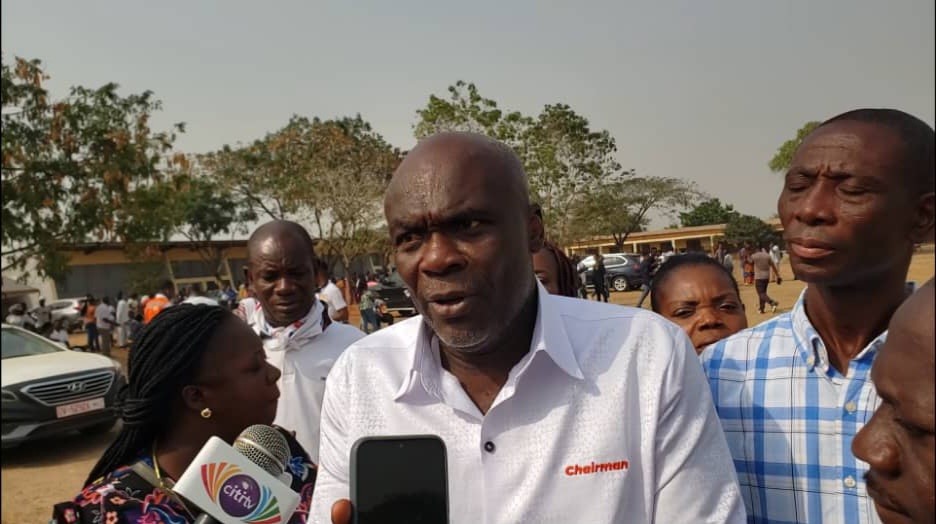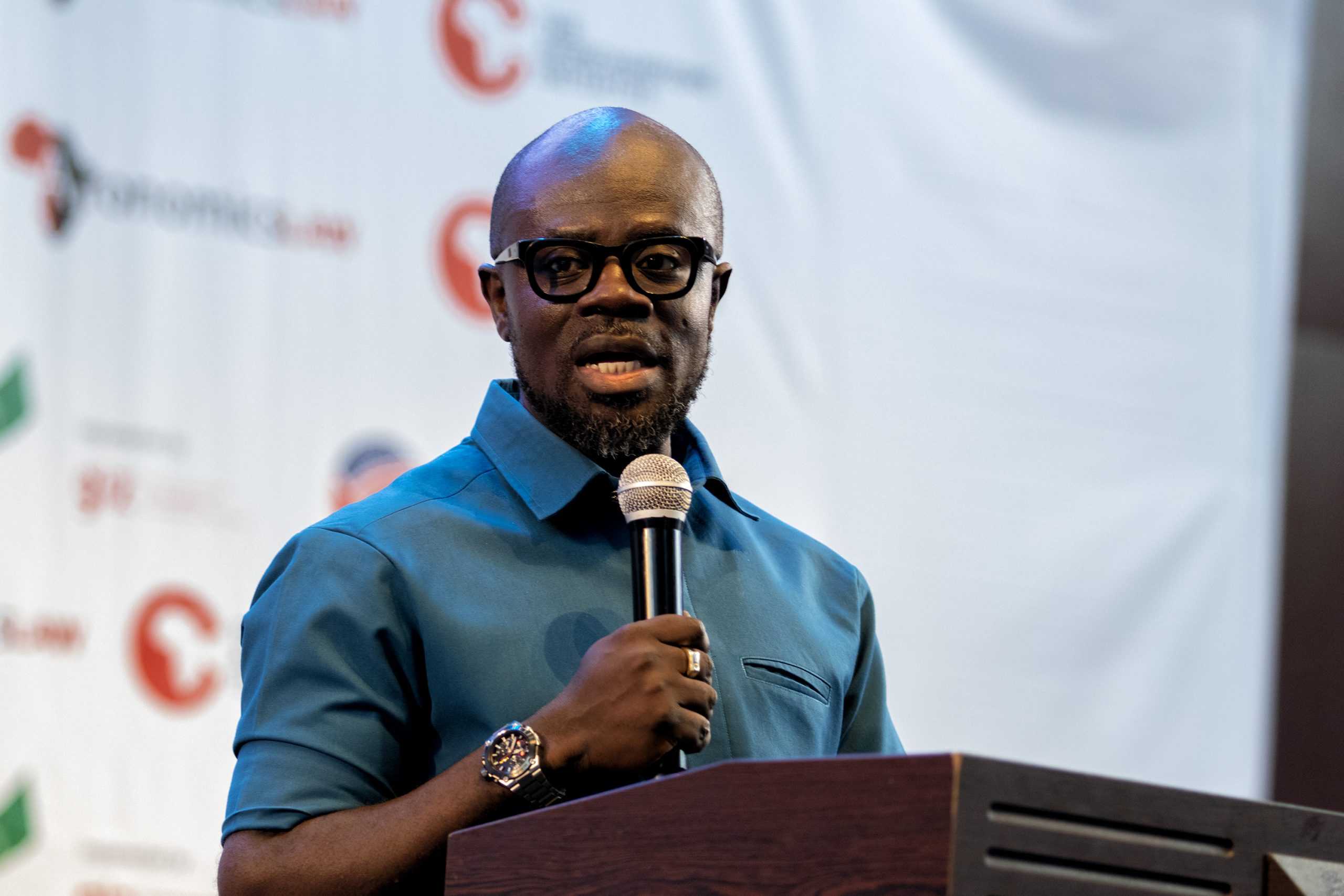
…Leading with grit, visibility, agility and courage
By M. Muniru HUSSEINI, PhD
“Have the courage to follow your heart and intuition. They somehow already know what you truly want to become.” — Steve Jobs
The concept of leadership is perhaps the most clichéd and yet it remains fundamental to transformational and lasting change. The spotlight has allure, the appearance of glitz and the splendour of public affirmation.
Nonetheless, the inconvenient truth is that it all begins in the shadows, a place where your best efforts are hidden, unrecognised, nearly always dismissed as anonymous. Sam Jonah began his career in the deep pits of Ashanti Goldfields, working in underground operations, and later spearheaded the transformation of the company into a mining multinational.
Osei Kwame Despite began his career selling music cassettes, feeding bottles and padlocks, and has gone on to found or co-found an amalgam of businesses spanning media, manufacturing and real estate. Farhan Alhassan, the MD of GCB Bank Ltd., started his career as an entry-level relationship officer and has risen to become the MD/CEO of one of the largest banks in Ghana.
All such beginnings appear crowded, making the journey to the spotlight seem largely improbable and out of reach. What makes a leader stand out in a crowded field? How does a person go from a position of namelessness to significance? While some may have had the good fortune of getting thrust into the limelight by serendipity and happenstance, for the overwhelming majority of leaders, it took grit, visibility, agility and courage.
Grit: passion and perseverance
In her book, Grit: The Power of Passion and Perseverance, American psychologist Angela Duckworth defines grit as “passion and perseverance for long-term goals”. She highlights grit as the principal factor in explaining why some individuals can accomplish difficult, high-level achievements.
It is essentially the passionate pursuit of goals that are not immediately realisable. It requires that the individual take a long-term view of their objectives and maintain a strong commitment to achieving them. Thinking long term gives the individual clarity of thought, gives meaning to their present efforts and minimises the blunder of being in unwarranted haste or using perfidy to get ahead. Mastery is a function of effort, persistence and learning.
It involves submission to the guided instruction of a skilled leader whose impact gets internalised and ingrained over time. Understanding this minimises exhaustion and enhances your staying power in the pursuit of your life’s grandest goals. The next key element of this journey is visibility.
Visibility: Controlling your narrative
Visibility is about getting seen, heard and recognised as an individual with leadership potential who drives impact. This entails clarity in your communication, the deliberate creation of a personal brand and consistently showing up to the call of duty. To be inarticulate is to have your ideas muffled and your voice drowned by the crowd.
You must be intentional about communicating your worldviews and giving people a sense of what you will and can do given the chance. The biggest inhibition to this is having the imposter syndrome, the tendency to invalidate your competencies and accomplishments despite any evidence to the contrary. It is also essential to curate a personal brand by carefully presenting and applying a combination of skills and experiences that make you distinguishable from others.
A key part of visibility lies in consistently showing up, being present and remaining involved. Overall, you should be deliberate in communicating your values and demonstrate authenticity in your actions, and do so in a manner that balances confidence and humility.
Many leaders and CEOs like Dr. Daniel McKorey and Captain Prince Kofi Amoabeng leverage platforms like LinkedIn, Facebook, etc., where they listen and interact with the public, engage in thought leadership and, in many ways, reveal their more personable sides.
In your professional growth, you must strategically court the attention and connect with critical audiences who are relevant and would propel you throughout your leadership journey. Strive to build cross-functional relationships, be consistent in delivering high-quality work and be deliberate in offering mentorship to people below you.
Agility: The need to adapt with conviction
Agility is vital to growth and progress. In a world of radical change and transformation, agility enables leaders to pivot quickly and appropriately respond to emerging challenges and opportunities. To be agile is to live with a mindset that embraces continuous learning and a will to solve problems.
While it is inconceivable to have a life or career with zero setbacks and false starts, keeping your emotional defences up and maintaining a stubborn refusal to give up will get you through the most intractable challenges. According to McKinsey & Co Research, agile teams are more productive and consistently deliver better results.
One of the most popular agility frameworks is the OODA (Observe, Orient, Decide, Act) Loop, developed by Colonel John Boyd, has proven to be particularly useful in fast-changing, high-pressure environments. It entails observing and gathering data from your environment, understanding any changes, threats or opportunities. The next is to orient yourself and put the information in proper context, and then decide a course of action based on your orientation.
The final step is to take action and then loop back to start the cycle again. On an individual level, agility implies self-awareness, observing changes in your professional environment and constantly updating yourself in skills, information and taking short courses (leverage platforms like Udemy, Coursera, etc.) on emerging technology relevant to your work. Agile teams are often cross-functional, where the leader leverages the diversity of skills and, within reason, empowers the team with autonomy.
Courage: Leading through uncertainty
Courage is the willingness to take action, make decisions and clearly articulate your convictions, even when they seem unpopular and uncomfortable. It involves standing up for your values and honestly admitting your mistakes. Courage builds trust and the ability to be openly vulnerable strengthens your leadership authority.
In 2001, Coach Cecil Jones Attuquayefio, facing significant recalcitrance and insolence from players and perceived stars and high performers, decided against defied public opinion and severe criticism, fielded an entirely home-based side in a World Cup qualifier against Nigeria.
The team put up a sterling performance and drew against a Nigeria team made up of professional players who played top teams around the world. Coach Attuquayefio became an instant hero, earning huge plaudits and, from then on, felt confident in not inviting any foreign-based players for future matches. When Bill Clinton announced his decision run for the Democratic nomination in 1991, there was a flurry of accusations bordering on infidelity and sexual indiscretions.
He went on national television, admitted his imperfections and spoke about learning and becoming a better man. Later, during his presidency and the Monica Lewinsky scandal, he admitted and apologised for engaging in an inappropriate relationship with Miss Lewinsky on national television.
He exited the presidency with an astounding approval rating of 66 percent. As a young leader, you demonstrate courage by honestly admitting your mistakes, speaking up even when it’s hard, taking responsibility for your actions – good and bad, persisting through setbacks and being your authentic self.
The four pillars of grit, visibility, agility and courage are uniquely interconnected and amplify one another in many profound ways. Grit heightens your sense of purpose and pursuit; visibility shows you to the world; agility helps you navigate life’s dramatic highs and lows and courage helps you push the limits of growth and leadership.
The spotlight is hardly given. It is claimed through actionable steps of speaking up, testing a new idea, facing your fear of public speaking, submitting a new product proposal to your management and honestly admitting it when you go wrong. With all these, you shall begin your foray into the spotlight. Be seen, be heard and be known for the value you bring!
The writer is a marketing strategist and lecturer at the University of Professional Studies, Accra.
Email: [email protected]
The post Going from the shadows to the spotlight appeared first on The Business & Financial Times.
Read Full Story















Facebook
Twitter
Pinterest
Instagram
Google+
YouTube
LinkedIn
RSS